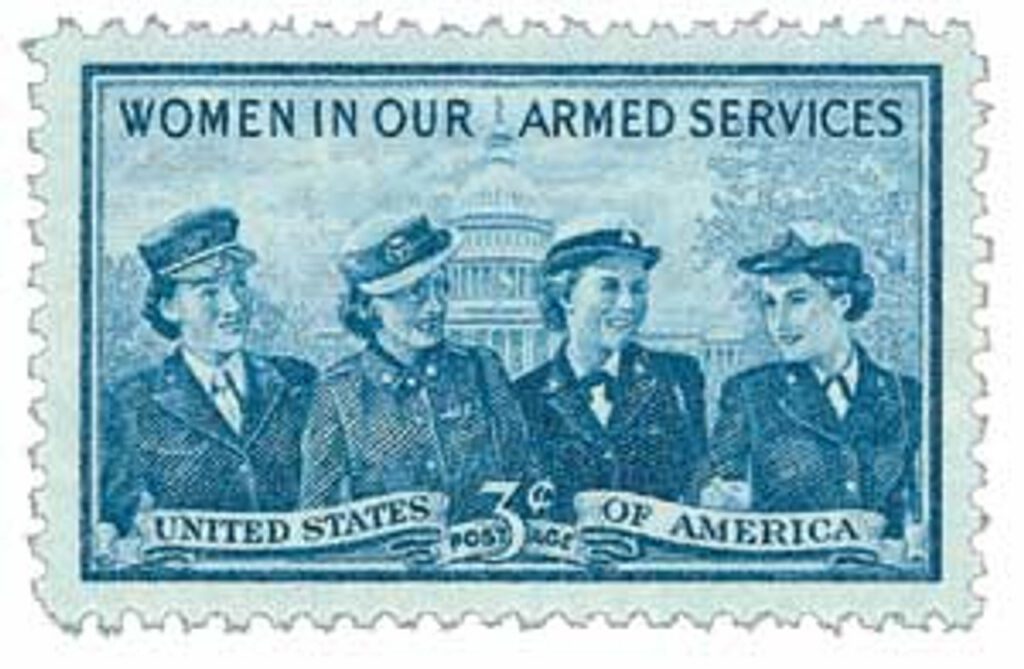On May 15, 1942, the Women’s Army Auxiliary Corps (WAAC) was established.
Prior to and at the start of World War II, women were generally only allowed on the battlefield as nurses or as volunteer communications specialists or dietitians. Though they served with the Army, they didn’t have any official status, so they had to pay for their own food and lodging. They also didn’t receive any disability benefits or pensions when they returned home.
Congresswoman Edith Nourse Rogers was determined to get women the same protection and benefits as men if they were to be called on again. In early 1941, she met with General George C. Marshall, the Army’s chief of staff, and told him of her plans to introduce a bill to create a women’s corps that was separate from the Nurse Corps.
Over time, the idea of a women’s corps gained support. However, while Rogers wanted to create an organization that was part of the Army with equal pay, pension, and disability benefits, the Army was uneasy about accepting women into its ranks. The resulting bill was a compromise. It would provide food, uniforms, living quarters, pay, and medical care for up to 150,000 women. However, the women would receive less pay than men of the same rank and didn’t receive overseas pay, government life insurance, veteran’s medical coverage, or protection if they were captured by enemy troops. Rogers had to give up some of her goals in order to get the bill onto the floor.

Rogers first introduced the bill in May 1941, but it didn’t receive much attention. It wasn’t until the Japanese attack on Pearl Harbor that the bill was more seriously considered. General Marshall spoke out actively in favor of the bill. America was entering a two-front war and needed all the help it could get. The bill faced serious opposition, especially from southern congressmen, who asked “Who will then do the cooking, the washing, the mending, the humble homey tasks to which every woman has devoted herself; who will nurture the children?”
After significant debate, the House and Senate passed Rogers’ bill, which President Franklin Roosevelt signed into law on May 15, 1942. He initially set the recruitment goal at 25,000. That was met by November, after which time it was increased to 150,000.
The same day the bill was approved, Oveta Culp Hobby was made director of the WAAC. Hobby had worked as a newspaper editor and worked on the Texas legislature before speaking out in favor of the WAAC. Her first priority was recruiting women to serve as clerical workers, teachers, stenographers, and telephone operators. Every woman she recruited would “free a man for combat.” As Hobby explained, “The gaps our women will fill are in those noncombatant jobs where women’s hands and women’s hearts fit naturally. WAACs will do the same type of work which women do in civilian life. They will bear the same relation to men of the Army that they bear to the men of the civilian organizations in which they work.”
The first batch of officer recruits were an average age of 25 years old, most of whom attended college and worked in an office or as a teacher. One in five enlisted because a male family member was serving and they wanted to help him get home faster.
After extensive training, the first WAAC units were put to work with Aircraft Warning Service units. By October, there were 27 WAAC companies at these stations up and down the eastern seaboard. Soon other WAACs were assigned to the Army Air Forces, Army Ground Forces, or Army Services Forces. As time went on, the WAACs duties expanded significantly. By the last year of the war, only about half of the WAACs were performing traditional jobs. Other tasks included weather observers, cryptographers, repairs, parachute riggers, photograph analysts, control tower operations, electricians, and radio operators, among many other things.
As American military planners began looking toward another front in Europe, they realized a need for more manpower. Out of this need, talks began of creating the Women’s Army Corps (WAC), which would be a part of the Army, and not just serving with it. The WAC would also offer women equal pay, privileges and protection. The WAC was created in July 1943. By war’s end, over 18,000 WAAC and WAC women served over seas.
The success of the WAAC and WAC led to similar auxiliaries – the WAVES, SPARS, and the US Marine Corps Women’s Reserve. The WAC was dissolved in 1978 when the female units were integrated with the men’s.
| FREE printable This Day in History album pages Download a PDF of today’s article. Get a binder or other supplies to create your This Day in History album. |
Discover what else happened on This Day in History.






Great post today Mystic. Women played a significant role in our victory in World War II and they do not always get the recognition they deserve.
This stamp is awesome! My Great Aunt is on it….she is the one representing the WAVES (on the far right). Thank you, Mystic for highlighting the role women played in WWII. It’s important history that needs to be talked about.
I have enjoyed all your past history moments and I have even learned a little as well..